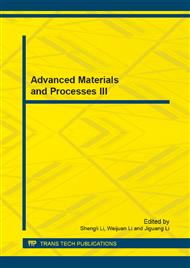p.443
p.447
p.451
p.455
p.459
p.463
p.469
p.473
p.477
Gulong Oilfield Putaohua Oil Layer in the Gu 83 Block Sequence and Sandstone Characteristics Research
Abstract:
Gu 83 wellblock is the center of the Gulong reserves, the well test oil yield is high, the oil-bearing area shall, as reserves and production increase nine oil production company of Daqing oil field replacement area. On the basis of high resolution sequence stratigraphy theory, strata as the instruction, the trunk section and the well combination method is used to contrast layer and multiple well profile compared to small layer, establish high resolution stratigraphic framework. The Putaohua reservoir is divided into three sandstone under the group, which, subdivided three eight small layers for sandstone. Through well combine to determine the sequence division of the interface, divided into Putaohua reservoir. Considering lithology, curve characteristics of shaft vibration, even the well profile correlation research area according to the principle, method, sequence division division, in the Putaohua oil layer, three sets of sandstone under the group; On the segmentation, each group sandstone, upper sandstone will eventually set is divided into two layers of P11, P12; middle sandstone is divided into P13, P14, P15 three small layer; under sandstone under group is divided into P16, P17, P18 three small layer.
Info:
Periodical:
Pages:
459-462
Citation:
Online since:
September 2013
Authors:
Price:
Сopyright:
© 2013 Trans Tech Publications Ltd. All Rights Reserved
Share:
Citation:


